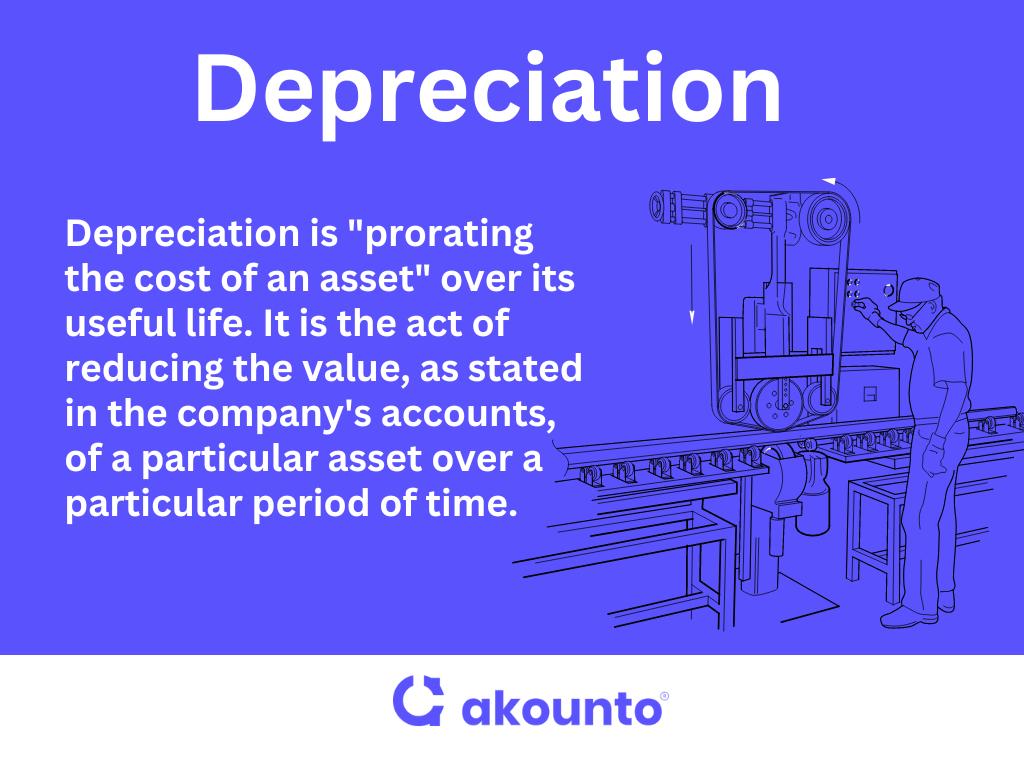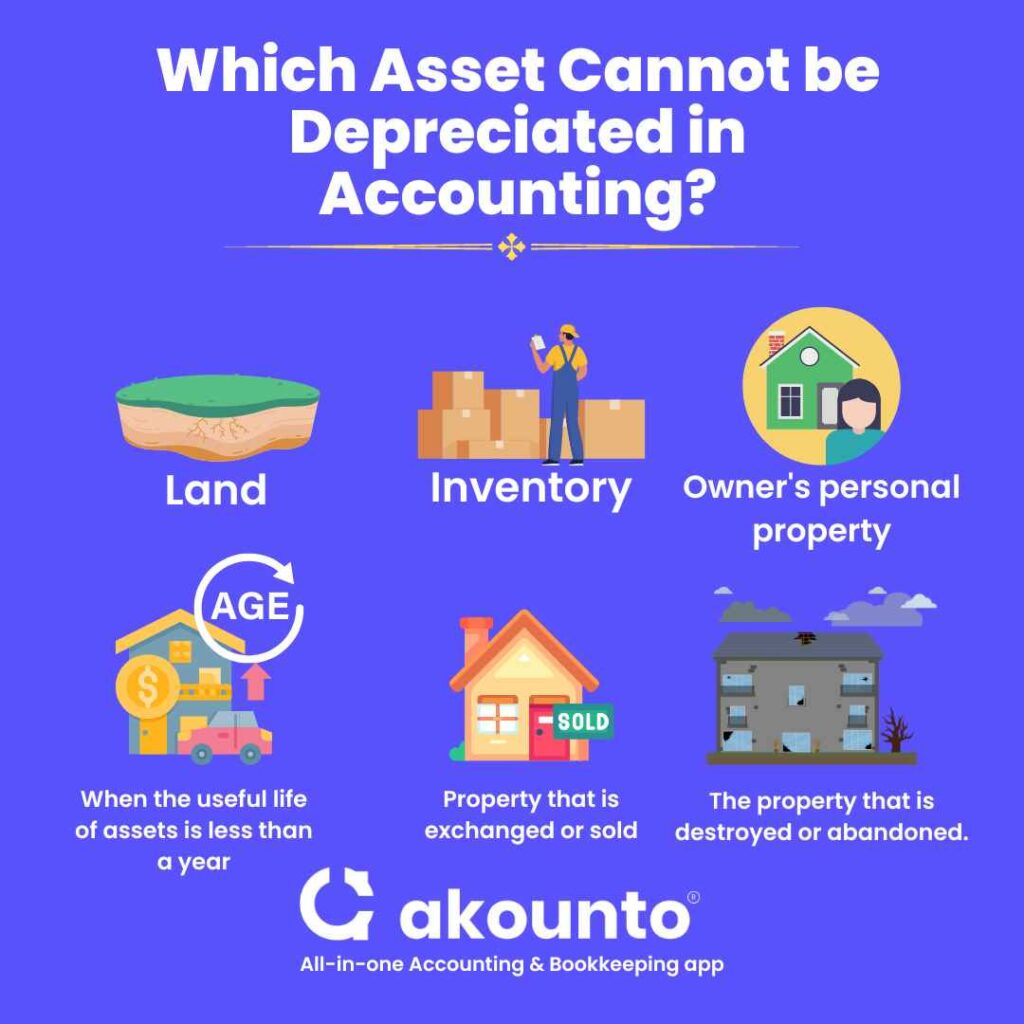You cannot depreciate the following assets:
- Land
- Stocks and Bonds
- Art, antiques, stamps, coins etc. types of collectibles
- Personal property or a private car
- Property not rented for the purpose of income generation
One cannot depreciate an asset that is neither owned by the business nor engaged in income generation and that doesn’t last more than a year.
Depreciation is “prorating the cost of an asset” over its useful life. Assets held loses value over a period due to wear and tear, obsolescence, degradation, or needing to be scrapped and replaced by the end of their useful life. Depreciation is adjusted over the years to offset this loss over a useful life.
Depreciation and amortization are similar; both are non cash expenditure and reduce the company’s profits. Depreciation is the recovery of the asset’s cost that is written off every year. Tangible assets are depreciated, while intangible assets are amortized.
Depreciation, a non cash expense, does not impact the actual cash balance, but it reduces the net profits as reflected in the company’s income statement. Thus depreciation helps reduce taxable income, thereby lessening the tax burden for the company.
What is Depreciation in Accounting?

Depreciation in accounting is the allocation of the cost of the asset over several years to recover its cost. The loss of the value of an asset is claimed every year until the full cost is recovered.
Assets’ original cost is called “basis” for tax purposes. The cost basis includes the actual price paid plus installation and testing fees, freight charges, and sales tax. For calculating depreciation, the cost basis should be updated every year.
The basis increase by the cost of major improvements undertaken for the property and decrease due to depreciation, the net being called “adjusted basis.” The adjusted basis of a depreciable property helps to gauge the profit or loss on the sale of a property.
Claiming depreciation helps in cost recovery and also contributes towards tax savings.
Why an Asset Cannot be Depreciated in Accounting?
In its Publication 704 Depreciation, IRS has stated the conditions under which an asset cannot be depreciated.
- Depreciation cannot be claimed on the owner’s personal property like personal residence, private car, etc.
- When an asset ceases to be a part of the business, the company cannot claim depreciation of the “property retired from service,” even if the cost hasn’t been fully recovered. Property is retired from service when:
- The property is taken for personal use.
- The property is exchanged or sold.
- The property is destroyed or abandoned.
- When the useful life of assets is less than a year, they cannot be treated as depreciable assets.
- While the cost of capital improvements for business buildings is allowed for depreciation, the cost of equipment purchased for improvements is not allowed for depreciation.
Restrictions and Conditions for Depreciation
- If the owner’s assets are employed for business and personal use, then the portion of the asset used for business purposes is eligible for depreciation. For example, when a vehicle is employed 60% for business purposes, then depreciation can only be claimed for 60% of the cost of the vehicle.
- In general, current assets are non depreciable assets because they are for less than a year.
- Depreciation cannot be claimed for inventory because it is for sales and revenue generation activities, is a current asset, and is usually with the company for less than a year.
- A company cannot claim depreciation for land. The original purchase price of land is allocated between the land and the building. The Assessor’s value computed during the computation of property tax helps to decide the ratio for allocating the value between land and building.
- Buildings and certain improvements to land can be claimed for depreciation.
- Dollar limits: Under Section 179, when the tax year started in 2022, the maximum expense deduction is limited to $1,080,000. If the cost of the property exceeds $2,700,000, then the limit gets reduced by the exceeding amount.
- Depreciation generally does not apply to patents and copyrights, even if their value reduces to zero by the end of their useful life. Only in certain cases the depreciation of intangibles is permitted.

What Qualifies as a Depreciable Asset?
Qualifying Property
Under section 179, the asset must be a qualifying property in service in a taxable year for claiming depreciation.
Qualified Improvement Property (QIP)
Qualified real property can also be elected as qualifying property under section 179 for claiming depreciation.
The company can claim depreciation on non-residential real property from the date it is placed in service and is classified as QIP under Section 168(e)(6); then, it is called “qualified real property.”
IRS has listed certain improvements done from or after the “placed in service” date, which are eligible for depreciation claim:
- Security systems
- Air conditioning, heating, and ventilation
- Roofs
- Alarm and fire protection systems
General Conditions for Being Depreciable Assets
- Business assets: Depreciation expense can be charged on those fixed assets that are used in business or are a part of income producing activity. A fixed asset becomes depreciable when it is “placed in service” of the business.
- Determinable useful life: The depreciable assets must have determinable useful lives. An asset cannot have unlimited useful life as it will be beyond the scope and horizon of accounting.
- Minimal useful life: A depreciable property must have a minimal useful life of at least more than one year.
- Personal and business assets: When an asset is both a personal asset and a part of business assets, then the proportion of the cost used for business purposes is only eligible for depreciation.
- Owned assets: Those fixed assets which are owned can be eligible for being a depreciable asset. Rental properties or leased property is not eligible for depreciation.
- Placed in Service: A property can be classified into depreciable assets when it is “placed in service.” When a property is ready and available for business usage, it is called “placed in service.” The company may or may not start using that property, but the date to claim depreciation begins when it is at the company’s disposal.
Examples of Depreciable and Non depreciable Assets
Examples of depreciable assets
- Commercial property like an office building
- Vehicles used in business
- Machines and other equipment used for manufacturing
- Furniture
Examples of non depreciable assets
- Personal property like residential property, private car, etc.
- Land
- Goodwill
Way Forward
To depreciate property placed in service on or after 1986, IRS has given the Modified Accelerated Cost Recovery System (MACRS) method. The taxpayer should fill and attach Form 4562 and the tax return to claim depreciation under Section 179, listed property, and property placed in service in a taxable year.
Stay updated with Akounto’s Blog and make informed business decisions.




